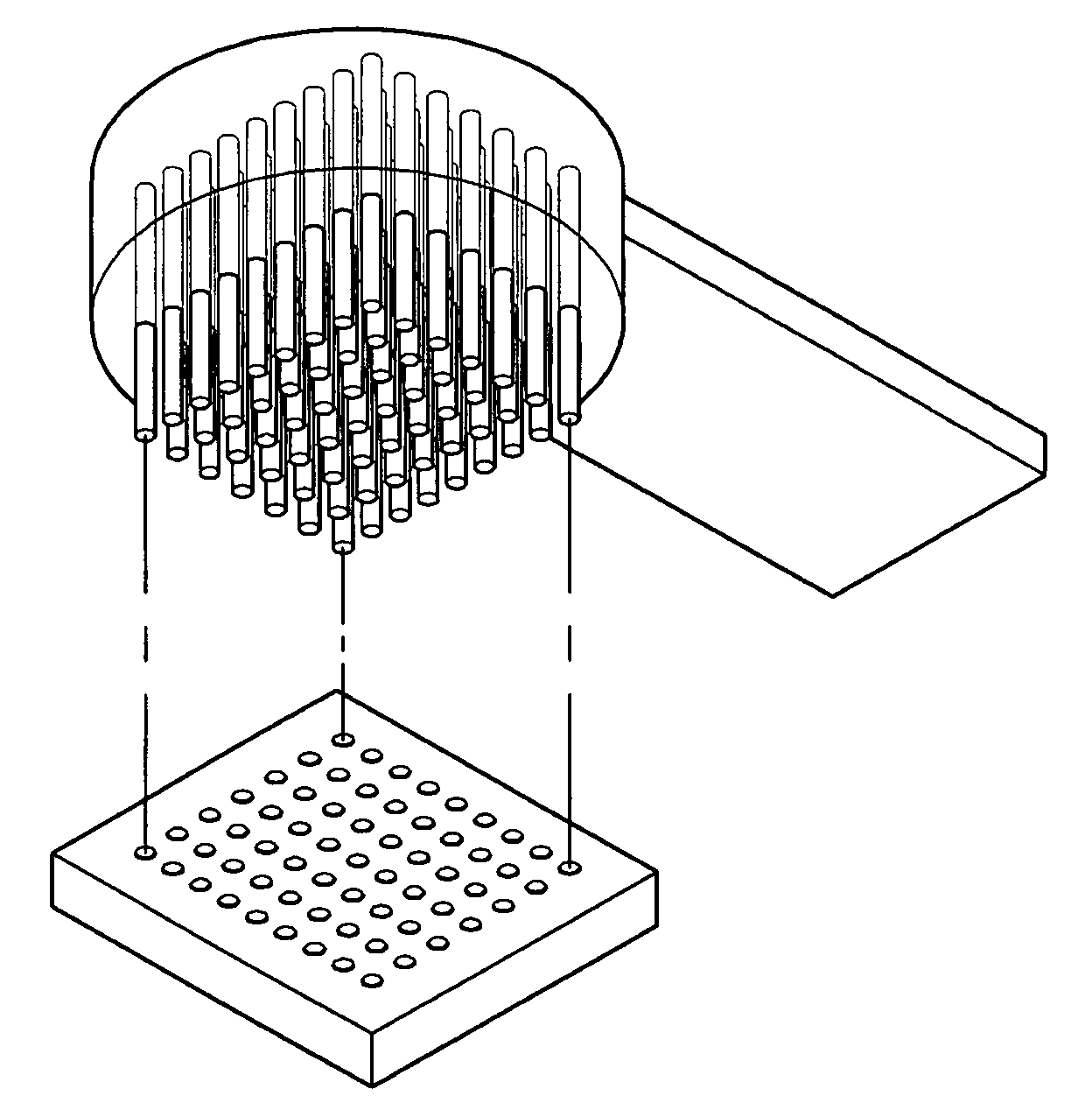Method for producing nanowires using porous glass template, and multi-probe, field emission tip and devices employing the nanowires
a nanowire and template technology, applied in the manufacture of electrode systems, electric discharge tubes/lamps, discharge tubes luminescent screens, etc., can solve the problems of inability to apply mass production, complicated conventional methods for producing nanowires using templates, and inability to meet the requirements of mass production, etc., to achieve the effect of easy control
- Summary
- Abstract
- Description
- Claims
- Application Information
AI Technical Summary
Benefits of technology
Problems solved by technology
Method used
Image
Examples
example 1
Production of Nanowires (1)
[0092]Following the removal of spontaneous oxides from a p-doped silicon substrate using an organic detergent and hydrofluoric acid, Au nanoparticles, serving as catalysts, commercially available from Nipponpaint, were spin-coated to form a thin film about 10 nm thick. Subsequently, a glass template was placed on the substrate, which was then introduced into a furnace. The temperature of the furnace was increased at a rate of 10 to 15° C. per minute, and Ar was introduced at a speed of 100 sccm through a sieve, with the total process pressure maintained at 500 torr. When heated to the process temperature 1,000° C., the substrate was maintained thereat for 30 minutes so as to grow the nanowires, followed by slowly cooling the substrate to 700° C. to terminate the growth of the nanowires.
example 2
Production of Nanowires (2)
[0093]The same procedure as in Example 1 was conducted, with the exception that a 4% SiH4 gas was further introduced at a speed of 100 sccm in addition to Ar gas, and the process temperature was set at 400° C.
example 3
Fabrication of Multi-Probe
[0094]The template of the nanowires produced in Example 1 was coated with a photoresist composition containing AZ1512, and a partial terminal region of the template was then exposed using a g-line stepper. The exposed region of the template was etched using a hydrofluoric acid solution to partially expose the microwires confined within the pores.
PUM
| Property | Measurement | Unit |
|---|---|---|
| thickness | aaaaa | aaaaa |
| temperature | aaaaa | aaaaa |
| pressure | aaaaa | aaaaa |
Abstract
Description
Claims
Application Information
 Login to View More
Login to View More - R&D
- Intellectual Property
- Life Sciences
- Materials
- Tech Scout
- Unparalleled Data Quality
- Higher Quality Content
- 60% Fewer Hallucinations
Browse by: Latest US Patents, China's latest patents, Technical Efficacy Thesaurus, Application Domain, Technology Topic, Popular Technical Reports.
© 2025 PatSnap. All rights reserved.Legal|Privacy policy|Modern Slavery Act Transparency Statement|Sitemap|About US| Contact US: help@patsnap.com



